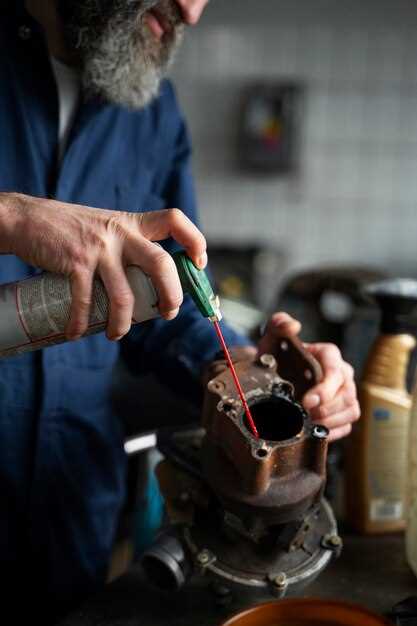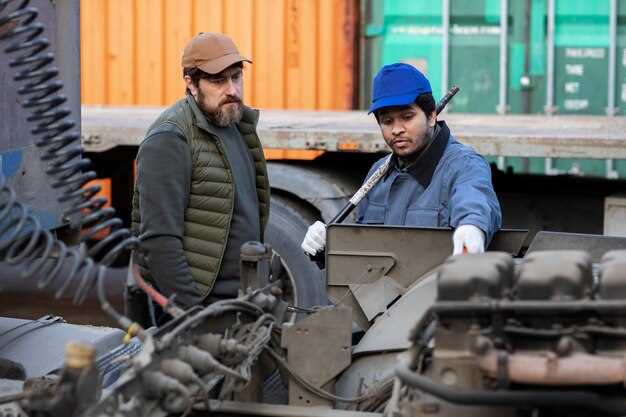How Turbochargers Work – A Beginner’s Guide


Turbochargers are an integral part of modern automotive engineering, playing a crucial role in enhancing engine performance and efficiency. At their core, turbochargers work by utilizing exhaust gases to increase the intake air into the engine, allowing for more fuel to be burned and ultimately producing more power without significantly increasing engine size.
For beginners, grasping the fundamentals of how turbochargers operate can be daunting. A strong understanding of the basic components and processes involved is essential to appreciate their functionality. The butterfly effect of exhaust gas flow on the turbine spins the compressor, which pressurizes incoming air, creating a cycle that significantly improves engine output.
In this article, we will break down the mechanics of turbochargers into digestible sections, explaining key elements like the turbocharger assembly, boost pressure, and wastegate. By the end, you will have a clearer insight into how these remarkable devices transform automotive power dynamics, enhancing both performance and fuel efficiency for a wide range of vehicles.
What is a Turbocharger and How Does It Work?
A turbocharger is a device that increases the efficiency and power output of an internal combustion engine by forcing additional air into the combustion chamber. It utilizes the exhaust gases produced by the engine to drive a turbine, which in turn powers a compressor that draws in and compresses ambient air. This process enhances the amount of oxygen available for combustion, allowing for more fuel to be burned and generating increased power.
The components of a turbocharger include a turbine housing, compressor housing, shaft, and bearings. When the engine operates, exhaust gases exit the engine and enter the turbine housing. The force of these gases spins the turbine, which is connected to the compressor via a central shaft. As the turbine spins, it creates suction in the compressor housing, drawing in outside air and compressing it before it flows into the engine’s intake manifold.
This compressed air is denser than naturally aspirated air, containing more oxygen molecules. When this air mixes with fuel and ignites in the combustion chamber, it results in a more powerful explosion, increasing the engine’s horsepower and torque without significantly increasing its size or weight. Additionally, turbochargers can improve fuel efficiency by enabling a smaller engine to produce similar power levels to a larger engine.
While turbochargers offer numerous benefits, they also involve certain challenges. The added complexity of parts can lead to potential maintenance issues. Additionally, turbo lag, the delay between pressing the accelerator and the turbocharger delivering increased power, can affect performance, particularly at low RPMs. Despite these challenges, turbochargers are widely used in both performance vehicles and everyday cars, becoming a popular choice for enhancing engine performance.
Key Components of a Turbocharger Explained
A turbocharger consists of several crucial components that work together to enhance engine performance. Understanding these parts is essential for grasping how a turbocharger functions.
The first key component is the turbine. The turbine is connected to the exhaust manifold of the engine, allowing it to utilize the exhaust gases produced during combustion. As these gases flow through the turbine, they spin it at high speed, creating the necessary energy to drive the compressor.
Next, there is the compressor, which draws in ambient air and compresses it before sending it into the engine’s intake manifold. This compression increases the air density, allowing more air molecules to enter the engine, which leads to improved combustion and increased power output.
The center housing refers to the section that houses the pivotal components, including the turbine and compressor. Inside the center housing is a shaft that connects the turbine and compressor, allowing them to spin together. This component is critical as it enables the conversion of kinetic energy from exhaust gases into boosted air pressure for the engine.
Supporting these components are the bearings, typically journal or ball bearings, which allow for smooth rotation of the shaft. These bearings reduce friction and heat, ensuring the turbocharger operates efficiently over time.
Additionally, there is an intercooler, which is not part of the turbocharger itself but commonly used in turbocharged systems. It cools the compressed air coming from the compressor before it enters the engine. Cooler air is denser, further enhancing performance by providing an increased amount of oxygen for combustion.
Finally, there are various electronic and mechanical controls, such as wastegates and actuators, which manage boost pressure and prevent over-boosting. The wastegate releases excess exhaust gases to regulate the turbine speed, ensuring the engine operates safely and efficiently.
How Turbochargers Improve Engine Performance
Turbochargers significantly enhance engine performance by increasing the amount of air and, consequently, fuel that can be burned in the combustion chamber. They achieve this through the use of exhaust gas energy, which would otherwise be wasted. By harnessing this energy, turbochargers force more air into the engine, enabling it to produce more power without increasing its size.
The key component of a turbocharger is the turbine, which spins when exhaust gases exit the engine. This spinning motion drives a compressor that draws in ambient air, compresses it, and then forces it into the engine. The increase in air density allows for a greater volume of fuel to be injected, leading to a more powerful combustion process.
In addition to power increase, turbocharging improves engine efficiency. By extracting energy from exhaust gases, it reduces the work the engine must do to create power, which can lead to better fuel economy. This means that, under certain conditions, a turbocharged engine can deliver higher horsepower while consuming less fuel compared to a naturally aspirated engine of the same size.
Turbochargers also contribute to reduced emissions. More complete combustion of fuel results in fewer unburned hydrocarbons being released into the atmosphere. This benefits not only the environment but also helps manufacturers meet stringent emissions regulations.
Moreover, turbochargers can provide a significant performance boost without necessitating an engine overhaul. They can be retrofitted to existing engines or included in new designs, allowing for flexibility in performance enhancement. Compact design and lightweight materials used in modern turbos further aid in maintaining vehicle agility.
Overall, the integration of turbochargers into engines is a vital technology that marries performance with efficiency, making vehicles more powerful while optimizing fuel consumption and minimizing emissions.
Common Myths About Turbochargers Debunked

Turbochargers are often surrounded by misconceptions that can lead to misunderstandings about their functionality and capabilities. Here, we aim to clarify some of the most common myths associated with turbochargers.
One prevalent myth is that turbochargers are only beneficial for high-performance vehicles. In reality, turbochargers can enhance fuel efficiency and power in a wide range of vehicles, from compact cars to trucks. They enable smaller engines to produce more power while maintaining better fuel economy, making them suitable for everyday driving.
Another myth is that turbo lag is a significant issue that makes driving turbocharged vehicles unpleasant. While turbo lag can occur, modern turbochargers are designed to minimize this effect through advanced technologies like variable geometry and twin-scroll designs. Many contemporary engines also utilize responsive tuning that reduces lag, providing a more seamless driving experience.
Some believe that turbochargers require extensive maintenance and are prone to failures. However, with proper care and routine maintenance, turbochargers are typically very reliable. Regular oil changes and ensuring the engine is adequately cooled can extend the life of a turbocharger significantly. Additionally, most manufacturers provide guidelines on maintaining turbocharged engines to ensure optimal performance.
There is a common notion that adding a turbocharger to an engine automatically results in increased reliability issues. In fact, when designed and installed correctly, turbochargers can operate well within the engine’s specifications, enhancing performance without compromising reliability. Modern engines are often engineered to handle the stress associated with forced induction.
Finally, many believe that turbocharged engines are significantly louder than their naturally aspirated counterparts. While the sound of a turbocharger can be distinct and sporty, it largely depends on the design of the exhaust system and tuning rather than the turbocharger itself. Many turbocharged vehicles offer a refined performance without excessive noise.
Understanding these myths helps potential buyers and enthusiasts make informed decisions about turbocharged vehicles, recognizing their benefits and potential without being misled by common misconceptions.
Maintenance Tips to Ensure Turbocharger Longevity
Turbochargers are complex components that require proper care to ensure they function effectively over time. Here are some essential maintenance tips that can help extend the life of your turbocharger:
- Regular Oil Changes: Consistently changing the engine oil is crucial. Clean oil helps reduce friction and provides the necessary lubrication for the turbocharger. Always use high-quality oil suitable for your engine.
- Use the Correct Oil Type: Ensure that you are using the recommended oil type as specified by your vehicle manufacturer. The right oil viscosity and specifications play a vital role in turbocharger performance.
- Check Oil Levels: Maintain appropriate oil levels and monitor them regularly. Low oil levels can lead to inadequate lubrication and potential turbo failure.
- Inspect Air Filters: A clean air filter ensures that adequate airflow reaches the turbocharger. Routine inspection and replacement of air filters prevent debris from entering the turbo system.
- Allow for Proper Warm-Up: Before pushing your engine hard, allow it to warm up gradually. A proper warm-up helps circulate oil throughout the system and reduces the risk of turbo damage.
- Cool Down After Driving: After heavy use or long drives, let the engine idle for a few minutes before turning it off. This allows the turbocharger to cool down gradually, preventing heat-stress and prolonging its life.
- Monitor Boost Pressure: Keep an eye on boost pressure levels using an appropriate gauge. Abnormal readings can indicate underlying problems that need to be addressed promptly.
- Avoid Overheating: Keep your engine and turbo within safe operating temperatures. Overheating can be detrimental, causing severe damage to turbo components.
- Professional Inspections: Schedule regular professional inspections for your turbocharger and associated components. Technicians can identify potential issues before they become severe.
By following these maintenance tips, you can significantly enhance the longevity and performance of your turbocharger, ensuring a smoother driving experience and reducing the likelihood of costly repairs.
How to Choose the Right Turbocharger for Your Vehicle
Choosing the right turbocharger for your vehicle involves understanding your power goals, engine specifications, and intended use. Begin by assessing the engine size and type. Turbochargers are designed for specific engine configurations, so ensure compatibility with your vehicle’s make and model.
Next, consider the power output you desire. Different turbochargers offer varying boost levels and power delivery characteristics. If you aim for significant gains in horsepower and torque, opt for a turbocharger that matches your target output. Focus on both the compressor and turbine sides, as each plays a crucial role in performance.
Evaluate your driving style and intended application. For daily driving, a turbocharger with a quicker spool time will provide more accessible power, enhancing acceleration. Conversely, if you are involved in motorsports, you might prefer a turbo that supports higher RPMs and provides maximum power at the expense of low-end responsiveness.
Another critical factor is the supporting modifications. Upgrading to a turbocharger often necessitates additional modifications such as fuel system upgrades, intercoolers, and exhaust changes. Ensure that your vehicle’s current setup can handle the increased airflow and boost pressure provided by a new turbocharger.
Research different brands and models, as some manufacturers specialize in specific performance needs. Reviews and testimonials can offer insights into reliability and performance satisfaction. Consult forums or communities related to your vehicle for recommendations and experiences from other enthusiasts.
Lastly, consider your budget. Turbochargers can vary significantly in price based on brand, size, and performance characteristics. While investing in a quality turbocharger is essential, it is equally important to allocate funds for necessary supporting components to ensure optimal performance and reliability.
